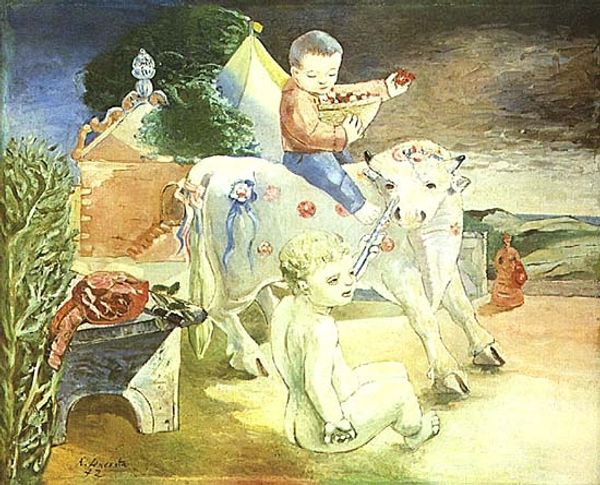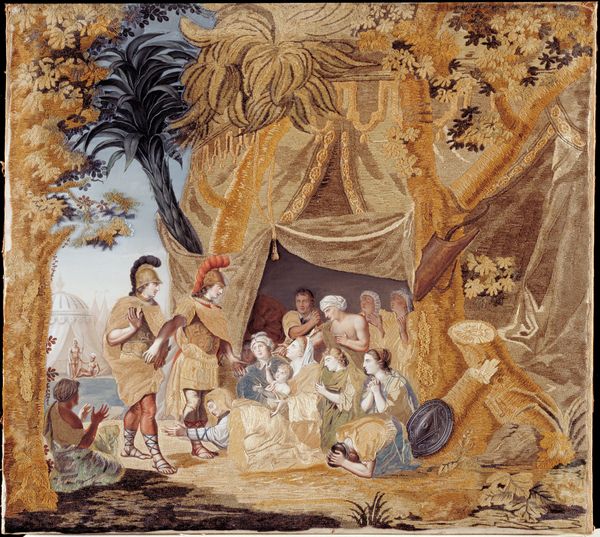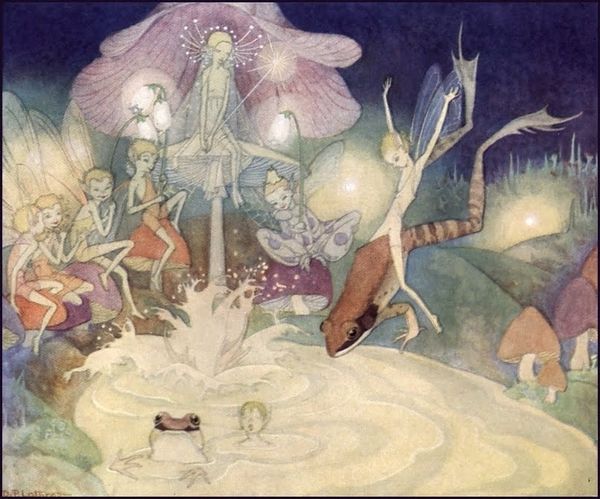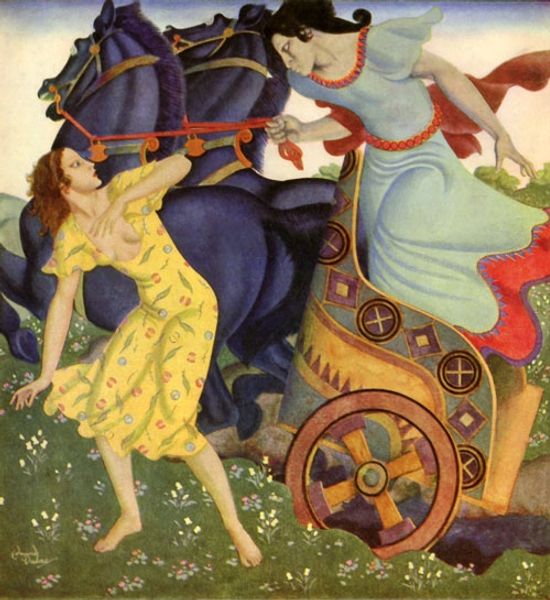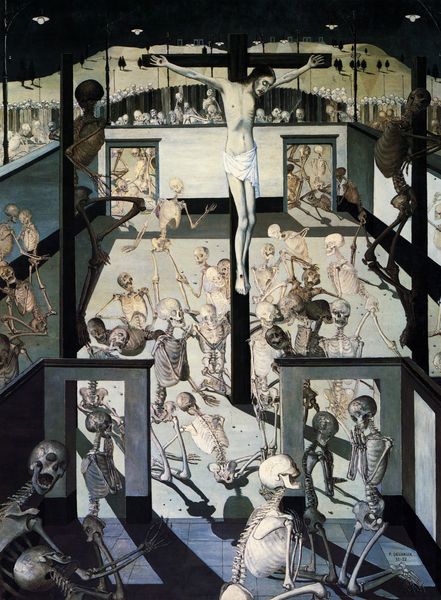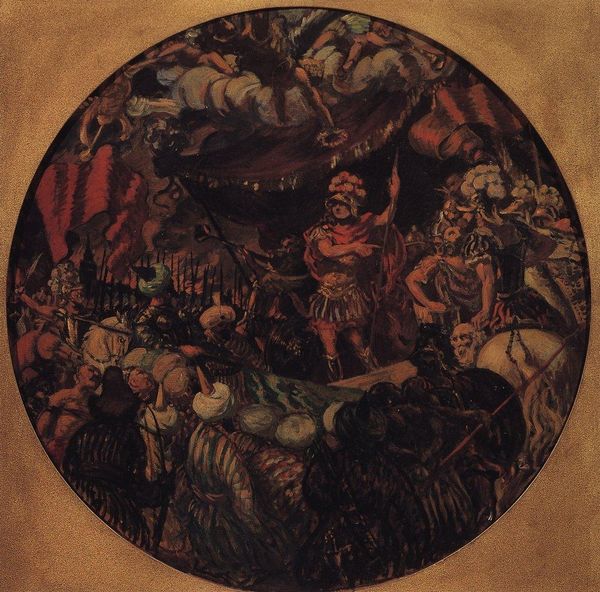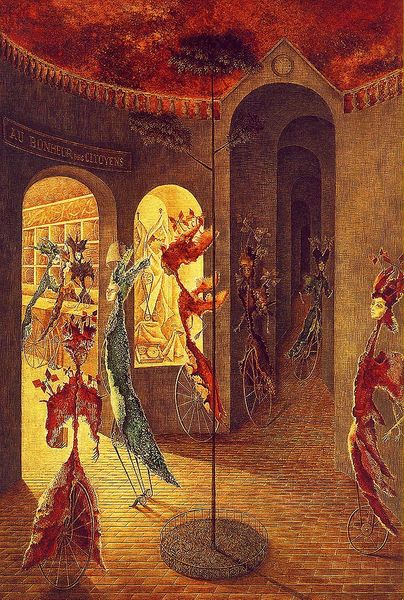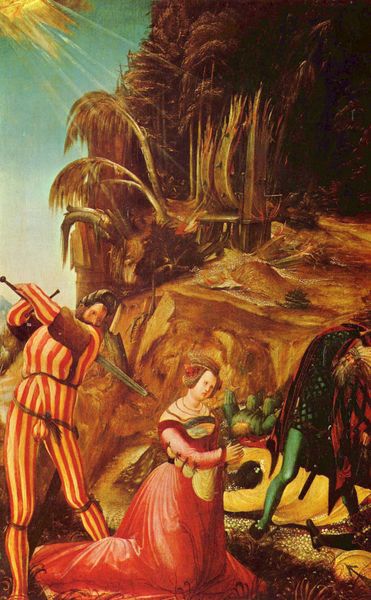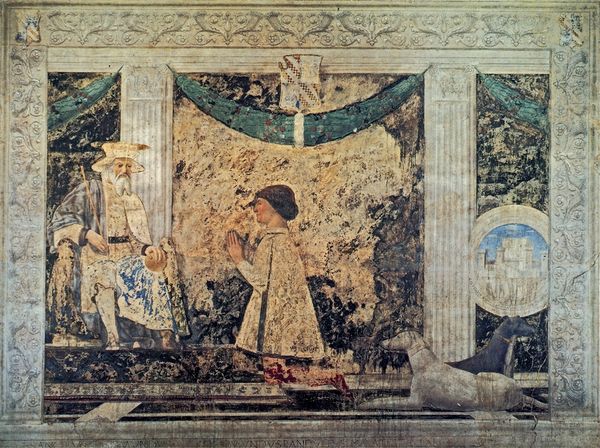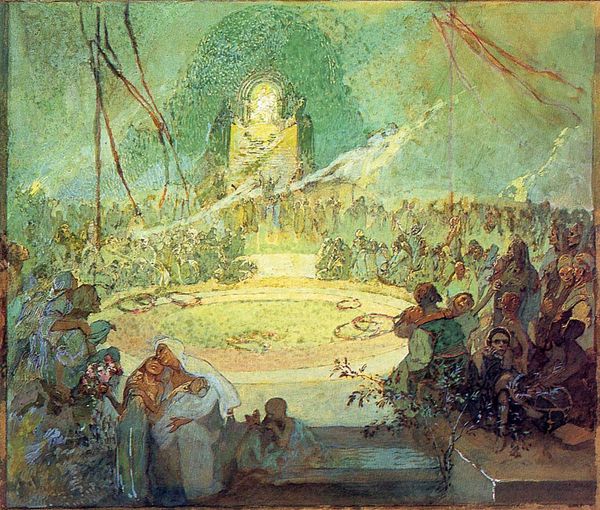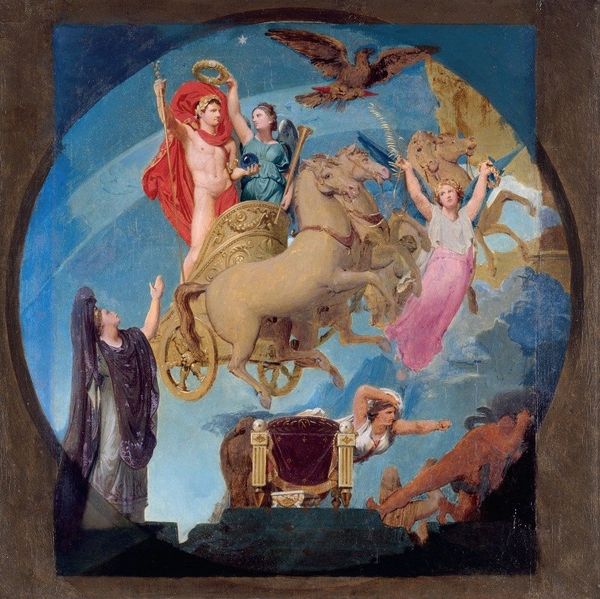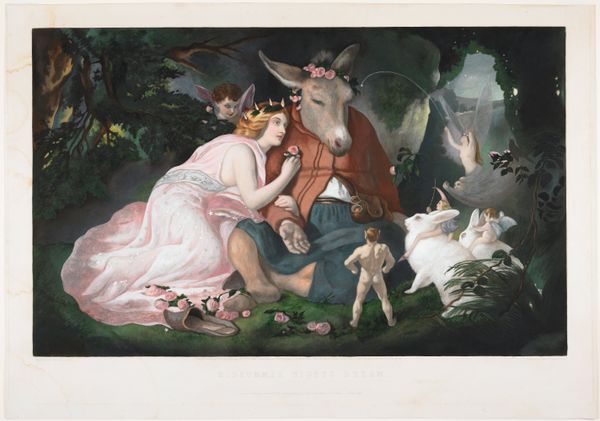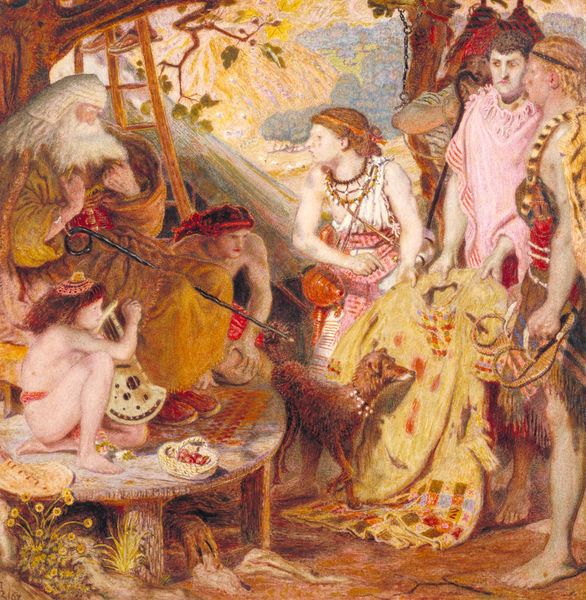
#
gouache
#
abstract painting
#
impressionist landscape
#
possibly oil pastel
#
underpainting
#
sketch
#
painterly
#
painting painterly
#
watercolour bleed
#
watercolour illustration
#
watercolor
Copyright: Public domain US
Editor: Here we have Pablo Picasso’s “Curtain for the Ballet 'Parade'”, painted in 1917. The muted colors and slightly obscured figures create a dreamy, almost unsettling atmosphere for me. What do you see in this piece? Curator: Oh, this curtain! It's pure theatrical magic, isn't it? It feels like stepping into a half-remembered dream, or maybe one of Erik Satie's eccentric compositions come to life – which makes sense, given Satie wrote the music. Imagine Picasso, in Rome with Diaghilev’s Ballets Russes, soaking up the energy. This curtain wasn't just a backdrop; it was a statement, a collision of the classical and the avant-garde. I almost sense a bittersweet reflection on tradition amidst a period of radical change… Do you feel that? Editor: I think I get what you mean by radical change, but can you say more about the tradition side? Curator: The harlequin figure for one. That character harkens back to commedia dell'arte, but Picasso gives him a modern twist. And that dreamy, almost pastoral scene coexisting with these very Cubist-esque, angular elements...it is like a stage where different eras are performing side-by-side, arguing about who gets the spotlight. And that winged horse--how surreal. It is like a child's imagination set free. Editor: It is almost as if we get an insight to Picasso playing on multiple ideas for the parade. It certainly puts things in a fresh perspective. Thanks! Curator: Absolutely! That’s the genius, isn’t it? It leaves you questioning and re-evaluating everything you thought you knew about art, ballet, and maybe even yourself. It certainly changed mine and still does today.
Comments
No comments
Be the first to comment and join the conversation on the ultimate creative platform.

